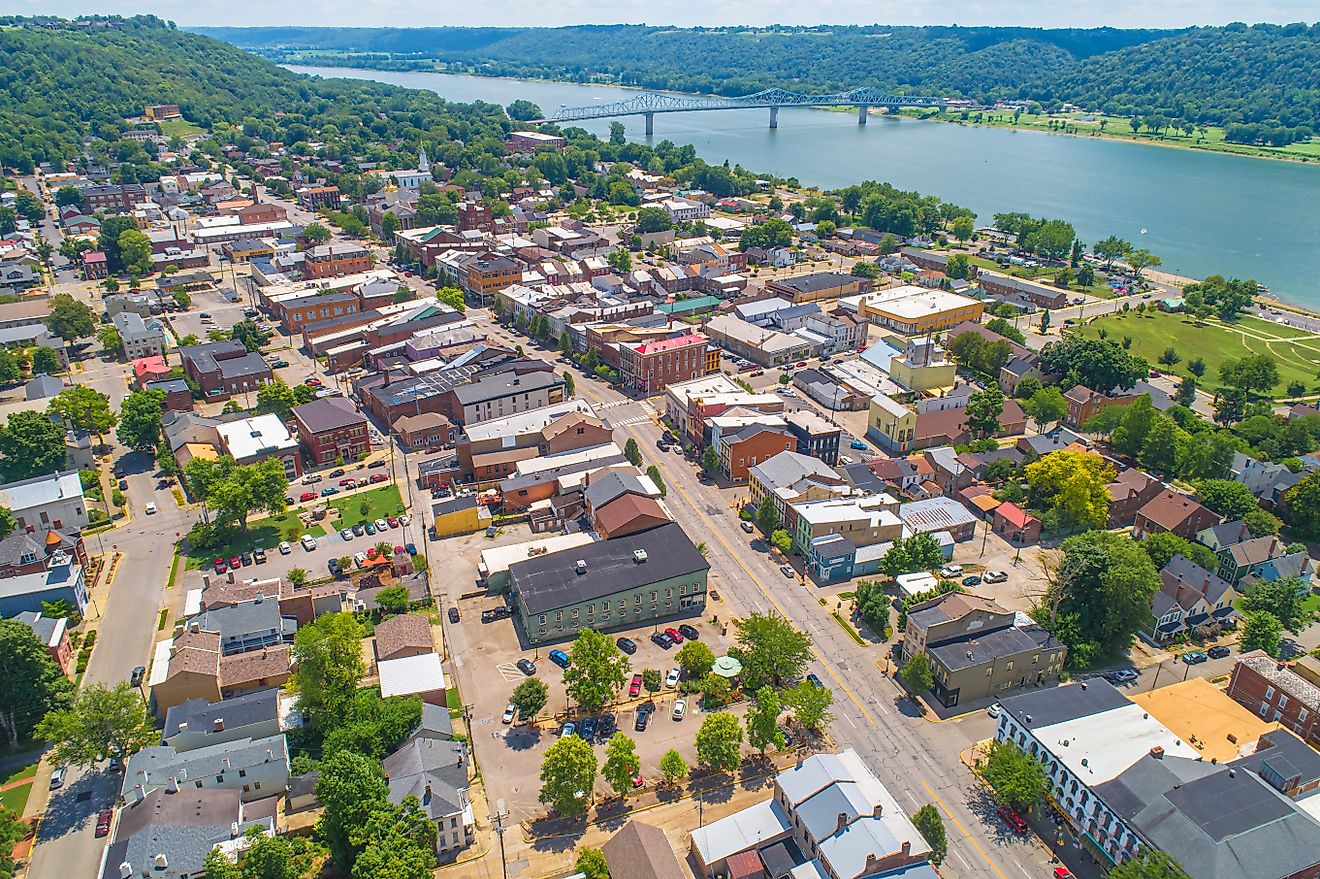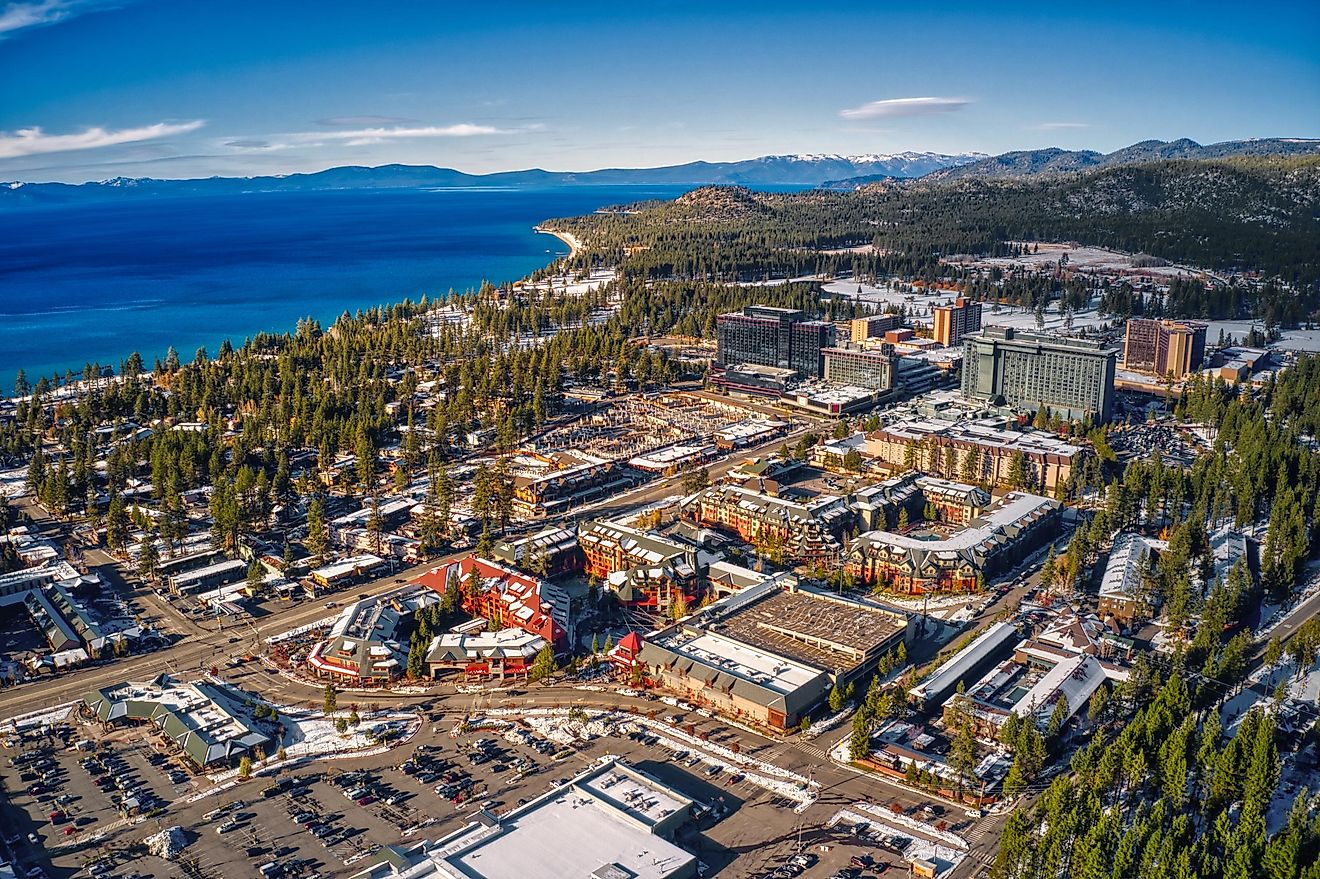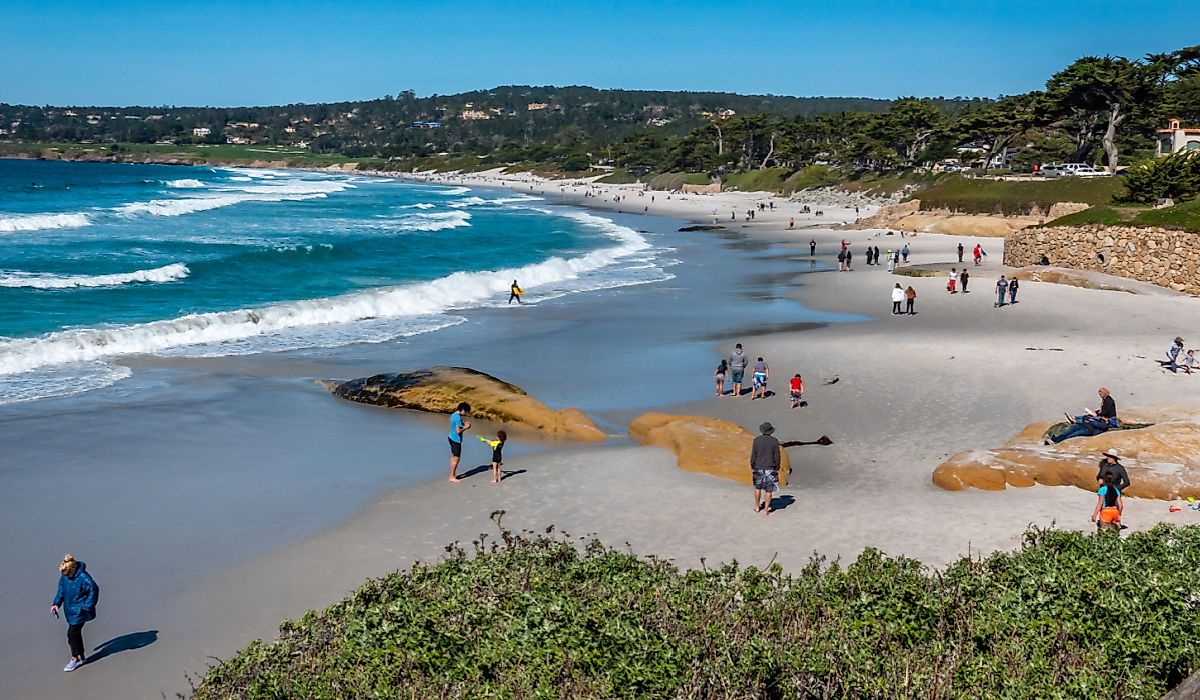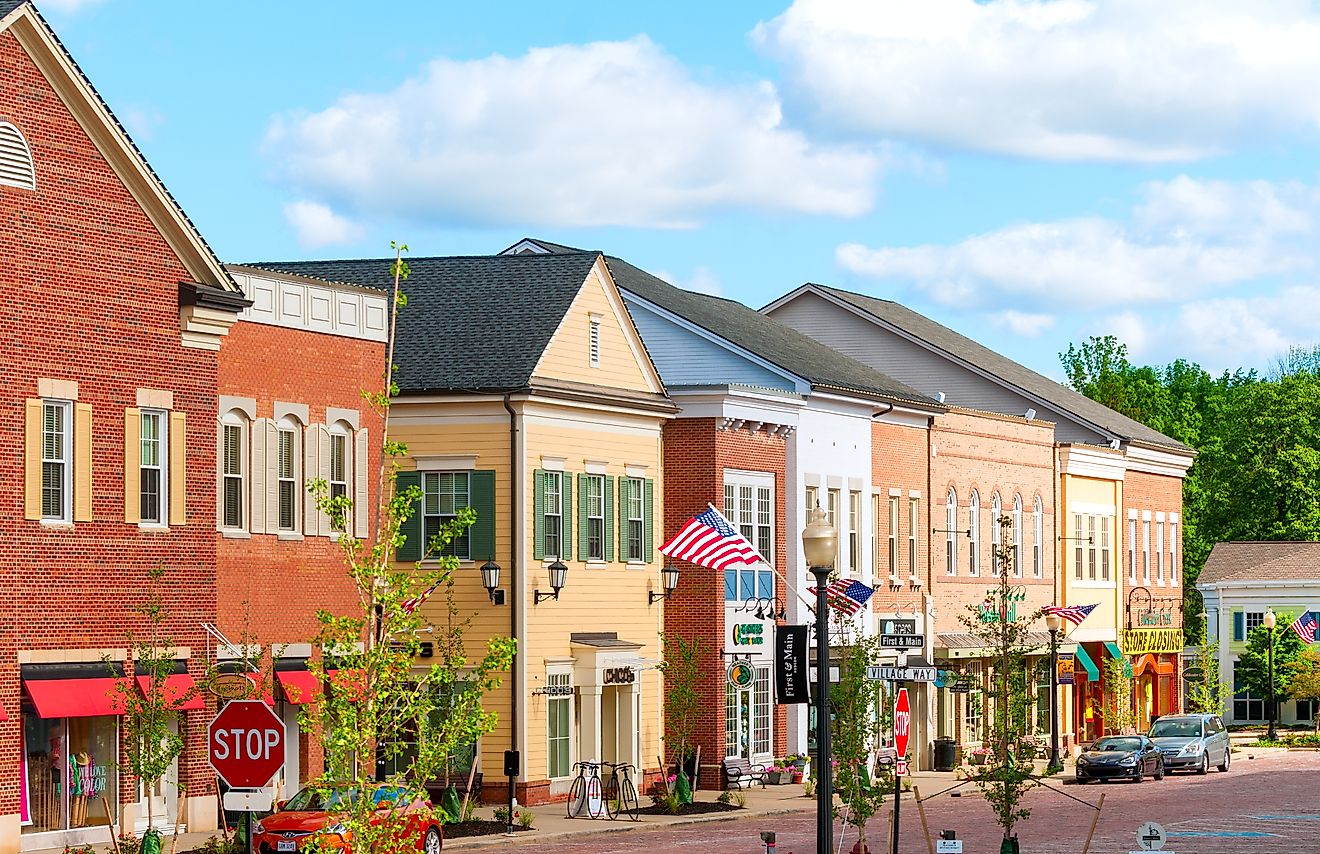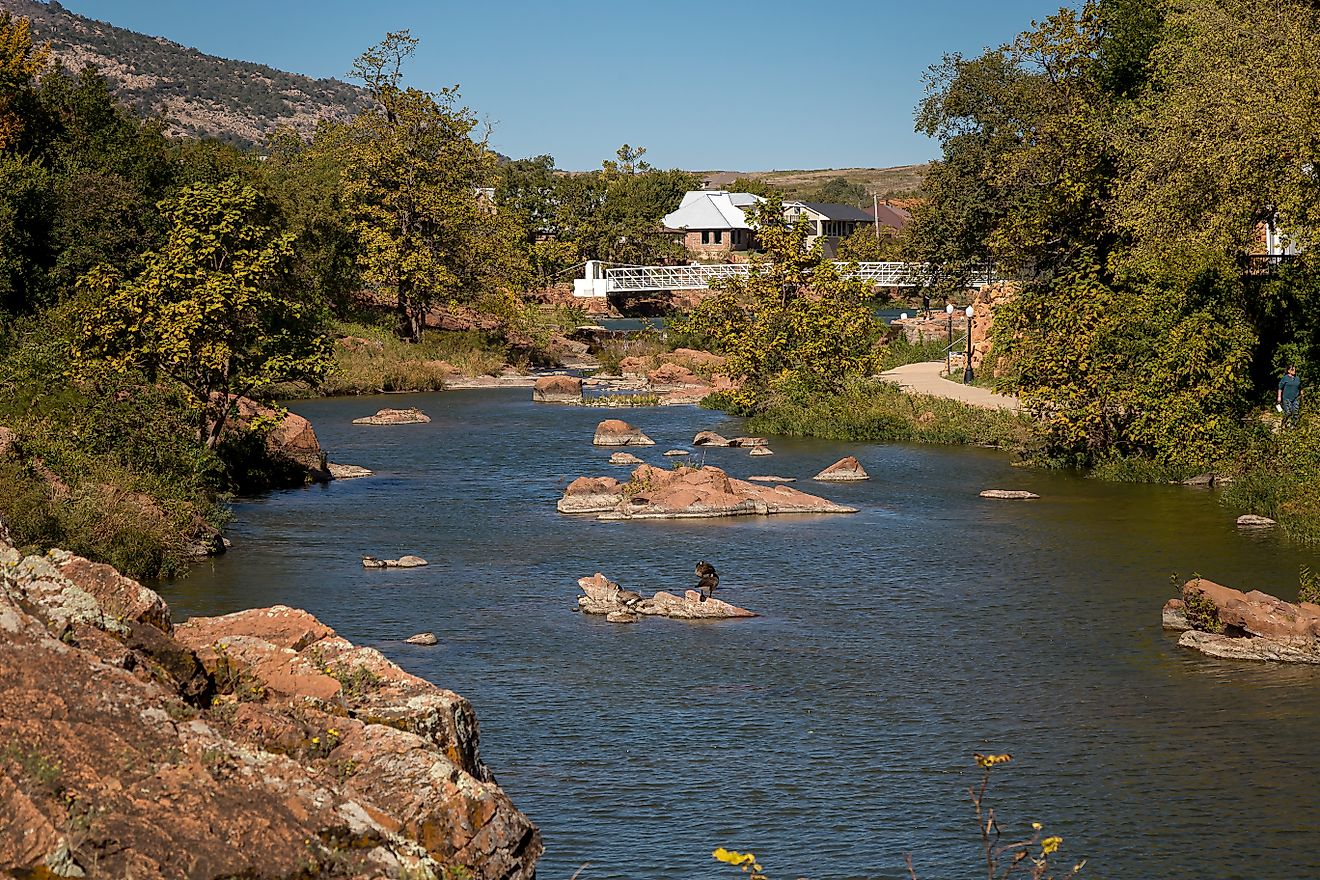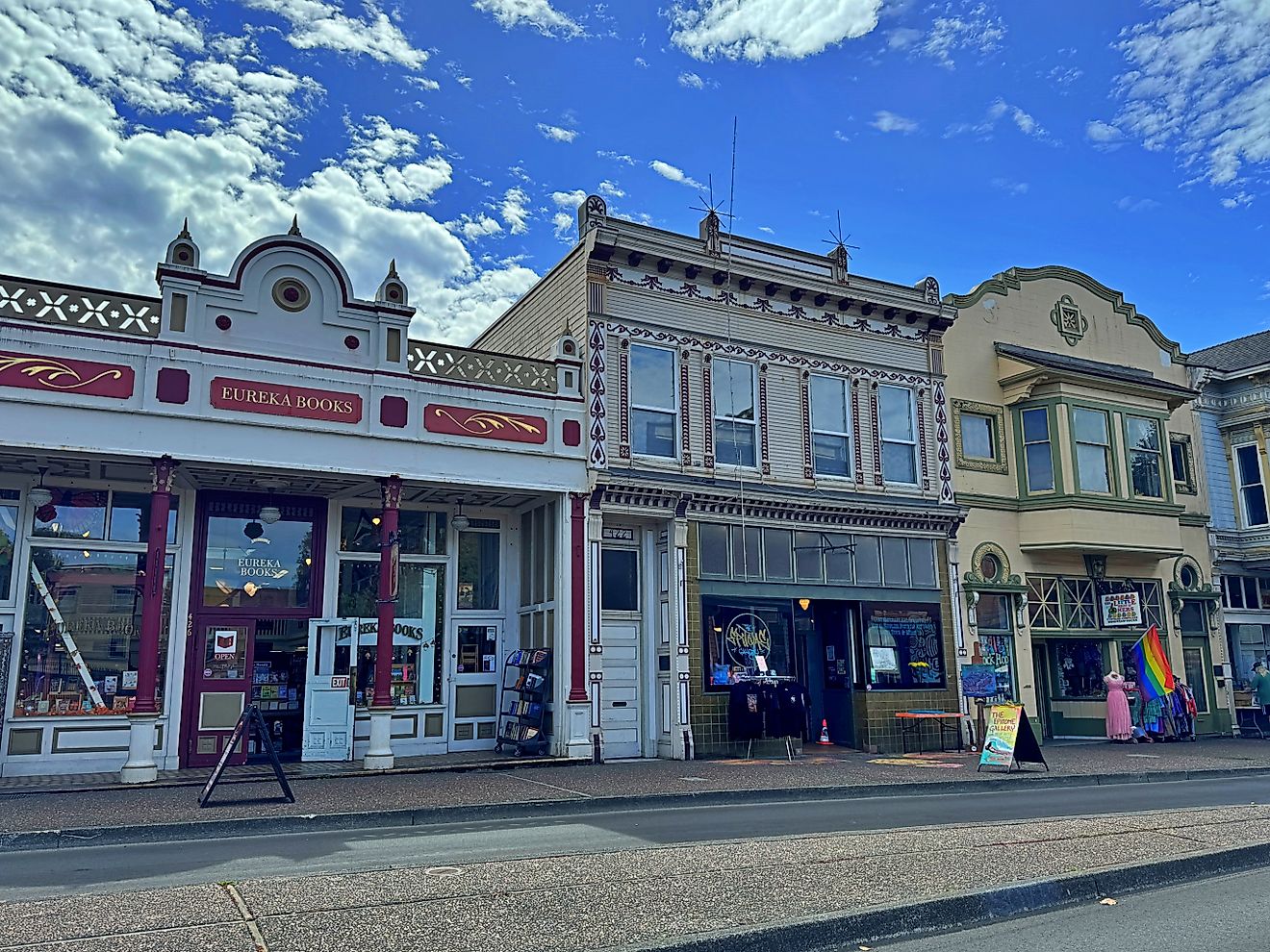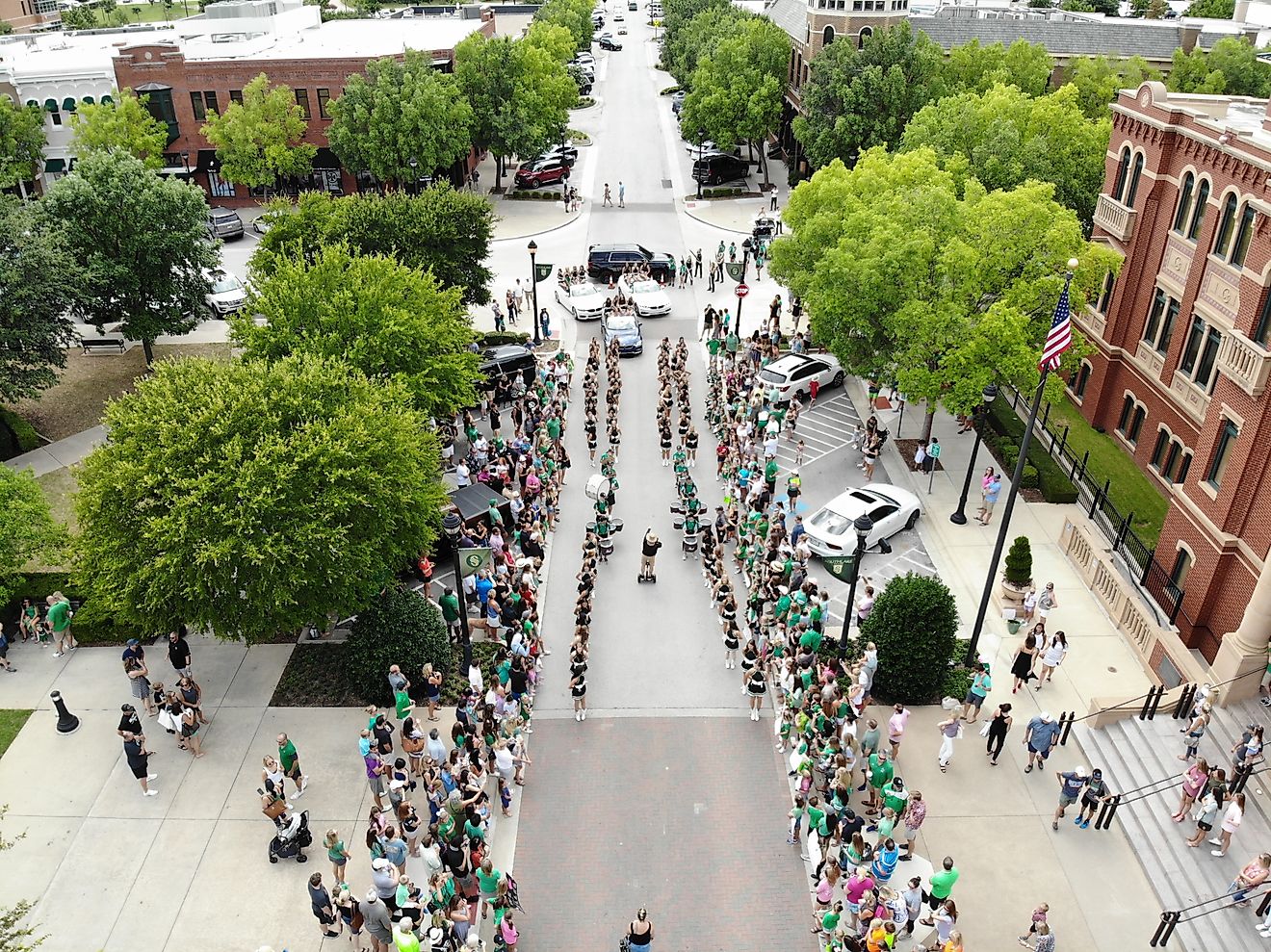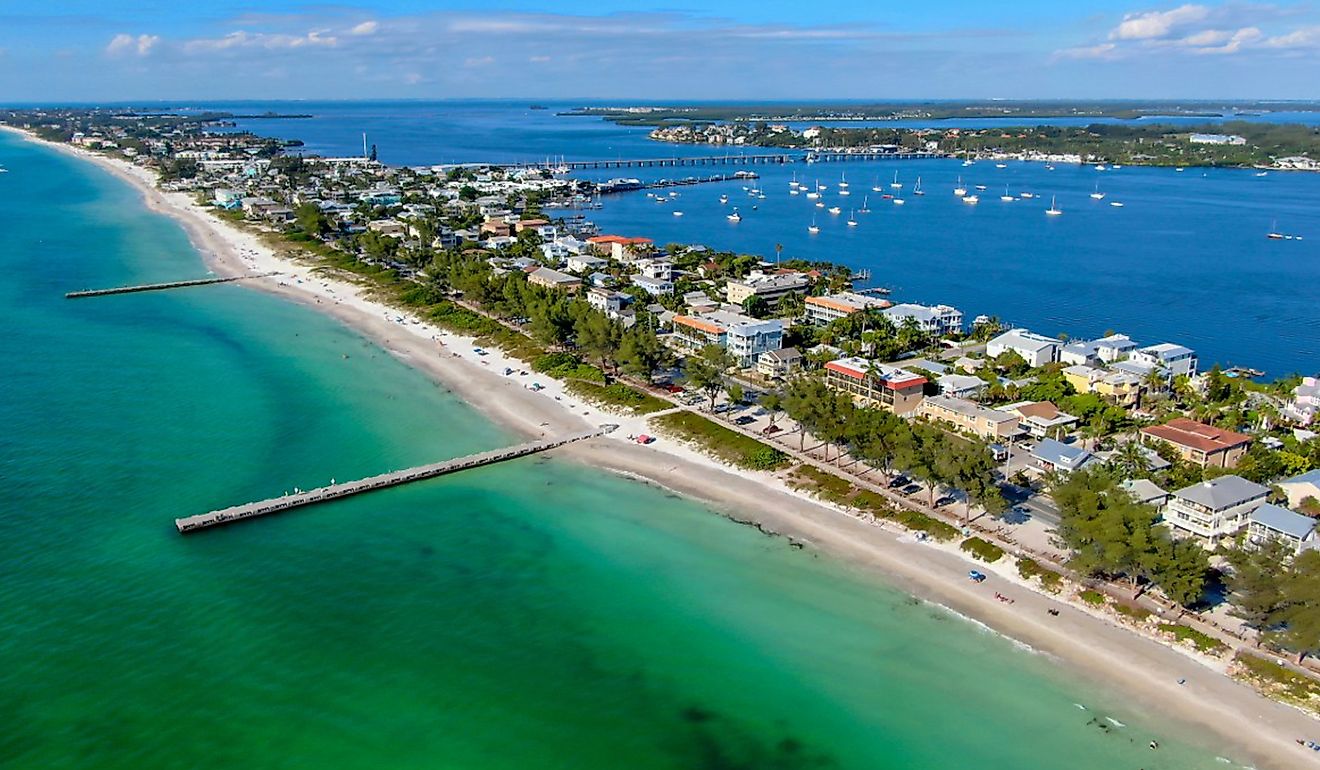
7 Safest Small Communities To Settle In The United States
To curate this list of safe towns, we built a low-drama index: five years of FBI Crime Data Explorer agency rates on aggravated assault and homicide, stacked against state and U.S. baselines. Towns that hugged or undercut those lines, with at most a brief spike, made the first cut. Places with steady governance, limited pass-through traffic, and a habit of saying no to chaotic growth made the second.
But numbers alone don’t keep a household anchored. Each pick also had to look and function like somewhere people actually live: a maintained main street, civic spaces that work on Tuesdays, and public amenities with names and addresses, not aspirations. We verified that with real images and on-the-ground details, museums with exhibits on the calendar, parks with trails that exist, cafés that open before school drop-off. The result is seven small U.S. communities where safety isn’t a vibe; it’s infrastructure you can perceive in both the data and the daily routine.
Ridgefield, Connecticut

Ridgefield is built on historic ground, literally. The Battle of Ridgefield in 1777 left marks that still shape the town's identity, from the preserved Keeler Tavern Museum, where a British cannonball remains lodged in a wall, to its intact 18th-century street grid. The town’s planning is deliberate: strict zoning laws prevent overdevelopment, preserving green space and residential quiet. Ridgefield has repeatedly ranked among the safest towns in the U.S., with police-reported aggravated assault and homicide rates consistently below both state and national baselines. The Ridgefield Police Department operates locally and visibly, reinforcing safety as a civic norm rather than a marketing claim.
The town offers specific, consistent amenities that reinforce its livability. The Ridgefield Playhouse hosts national touring acts and film screenings in a restored 1938 auditorium, serving as a cultural hub. Weir Farm National Historical Park, once home to American Impressionist J. Alden Weir, offers maintained trails and open-air studios amid low foot traffic. Ross’ Bread, a bakery at 109 Danbury Rd, supplies the town’s morning rhythm with sourdough and coffee roasted in-state. Deborah Ann’s Sweet Shoppe sells handmade chocolates and ice cream in a building that once housed a general store.
Simsbury, Connecticut

Simsbury holds the distinction of being the first town in Connecticut to earn a Bicycle Friendly Community designation from the League of American Bicyclists. The Farmington Canal Heritage Trail cuts through its center, part of a route once used by the Underground Railroad. Settled in 1670, Simsbury retains a municipal rhythm shaped by conservation and civic regulation. Local governance enforces architectural preservation and open space protection. The Simsbury Police Department reports some of the lowest violent crime rates in Connecticut year over year, with aggravated assault and homicide incidents rarely registering above statistical baselines. The town’s built environment and public safety profile attract long-term residents seeking predictability and civic continuity.
The Heublein Tower in Talcott Mountain State Park offers views of the Farmington Valley and is accessible by a short hike from the town’s edge. At the Old Drake Hill Flower Bridge, an 1892 iron truss bridge now covered in seasonal blooms, residents gather for events maintained by local volunteers. Popover Bistro & Bakery anchors the weekday lunch crowd with house-made soups and fresh bread. Flamig Farm, a family-run educational farm and seasonal market, features hayrides, farm animals, and a backwards “EGGS” sign that has become a local marker.
Danville, California

Danville maintains a rare status: a town within reach of the Bay Area that has resisted sprawl without becoming remote. Once a railroad stop along the Southern Pacific line, its old station now houses the Museum of the San Ramon Valley, where freight manifests from the 19th century are still archived. The town’s building codes and development restrictions limit density, preserving residential calm. Danville Police Services report violent crime rates that consistently fall below both California and national levels, with aggravated assaults and homicides remaining statistically negligible across multiple years. Security here is rooted in visible enforcement, local governance, and longstanding community structures.
The Iron Horse Regional Trail cuts through town, tracing the former rail line for cyclists and pedestrians without vehicular interruption. At Esin Restaurant and Bar, located in a former farmhouse on San Ramon Valley Boulevard, the menu rotates by season and region but remains focused on consistency over trend. Eugene O’Neill’s Tao House, now a National Historic Site, sits in the hills nearby, where the playwright once lived in isolation. Sideboard, a café in a renovated cottage, offers counter-service breakfast and front-porch seating.
Moraga, California
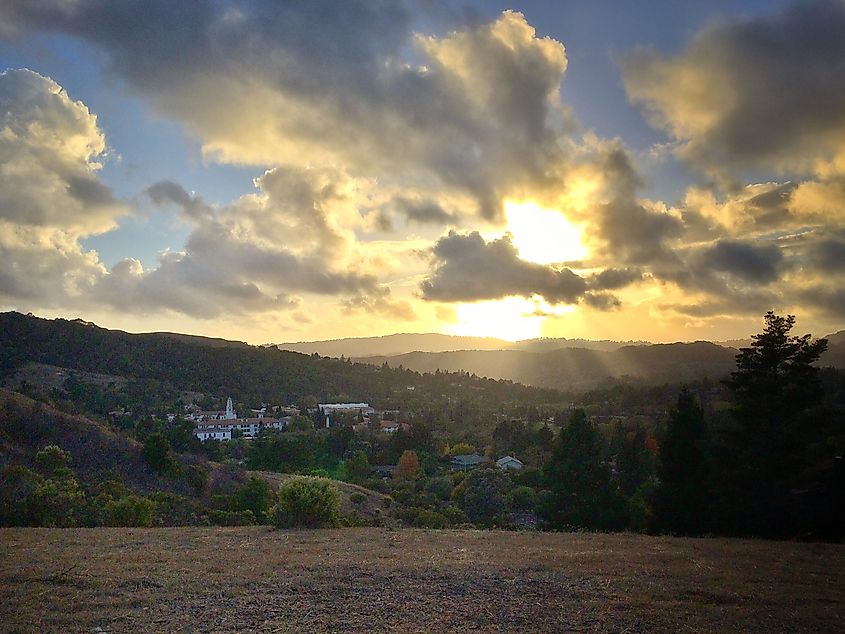
Moraga occupies a narrow basin in the East Bay hills, surrounded on all sides by protected open space. Its geographic isolation is not incidental, it was once the site of a 19th-century cattle ranch operated by Joaquín Moraga, grandson of the commander who founded San Francisco. The town incorporated in 1974 to control growth and land use directly, which it has done with consistency. Moraga Police Department data show violent crime rates well below both California and U.S. levels across multiple years, with aggravated assaults rarely occurring and homicides virtually absent. The town’s limited access points, small commercial core, and strong town governance support a measurable and sustained level of safety.
Saint Mary’s College of California anchors the town academically and culturally. Its Museum of Art rotates exhibitions by Bay Area painters and works from its permanent collection of William Keith landscapes. At Moraga Commons Park, families gather for seasonal concerts and picnics under the redwoods. Camino Pablo leads south to Rancho Laguna Park, where off-leash dog hours and hiking trails attract daily use. Moraga’s only independent coffeehouse, Si Si Caffe, serves espresso and pastries across from the town’s Safeway plaza.
Milton, Georgia

Milton was formed in 2006 out of unincorporated land in northern Fulton County, making it one of the youngest cities in the state by charter, but its landscape is rooted in agrarian Georgia. Zoning laws favor equestrian estates, low-density development, and conservation subdivisions, which has kept the area’s rural character intact despite its proximity to Atlanta. The Milton Police Department has consistently reported violent crime rates, including aggravated assault and homicide, well below Georgia and national levels, with year-over-year stability. The town’s spatial layout, limited commercial density, and local control over services contribute to long-term residential safety.
Crabapple Market functions as the town’s walkable center, with a restored main street, weekly farmers markets, and tenants like Olde Blind Dog Irish Pub and Six Bridges Brewing. Bell Memorial Park supports daily sports leagues and walking paths, drawing steady use from residents. Birmingham Park remains mostly undeveloped, with trails cut through pine and hardwood for passive recreation.
Southlake, Texas
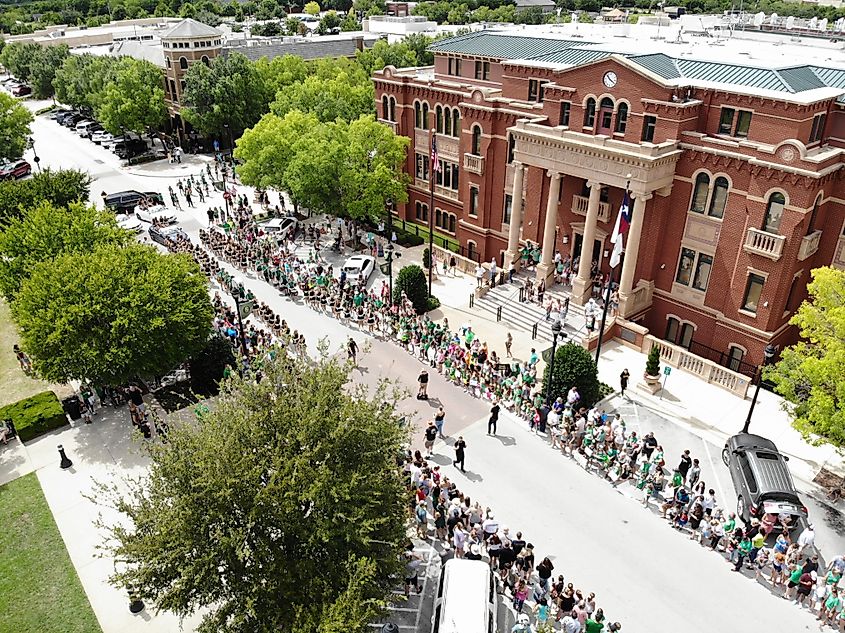
Southlake was originally a cluster of farming settlements around Grapevine Lake until the 1950s, when the construction of DFW International Airport shifted its trajectory. Since then, Southlake has developed under tight municipal oversight, with master-planned neighborhoods and design standards enforced at the city level. The Southlake Department of Public Safety, which combines police and fire services, reports violent crime rates that stay consistently below both Texas and U.S. norms, with aggravated assaults and homicides rarely appearing in year-to-year data. Southlake’s demographic stability, education infrastructure, and limited rental housing contribute to low-risk conditions.
Southlake Town Square acts as the city’s commercial and civic center, with anchor tenants like national retailers housed alongside independent shops. In addition, Central Market anchors the Shops of Southlake across E. Southlake Blvd from Town Square. At Feedstore BBQ, brisket and sausage are served counter-style in a former farm supply building on South White Chapel. Bob Jones Nature Center and Preserve offers trail access into the Cross Timbers ecosystem, with interpretive signage and volunteer-led programming. Bicentennial Park includes the city’s tennis complex, a splash pad, and multiple sports fields used year-round by local leagues.
Bainbridge Island, Washington
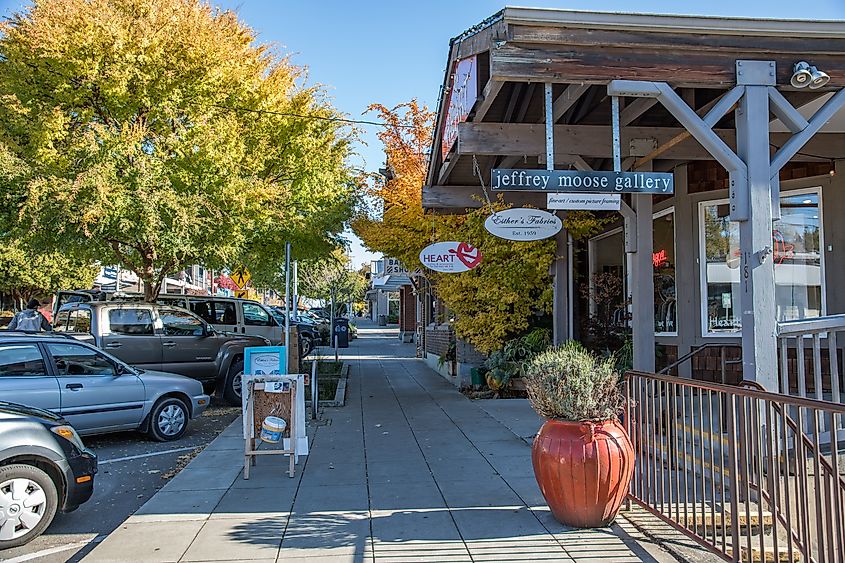
Bainbridge Island sits just west of Seattle across Puget Sound, accessible by a 35-minute ferry but governed like a self-contained municipality. The island was the first in the country to vote in favor of Japanese-American reparations and is home to the Bainbridge Island Japanese American Exclusion Memorial, a National Park Service site. Bainbridge Island is linked to the Kitsap Peninsula by the Agate Pass Bridge and to Seattle by ferry. Bainbridge Island Police Department reports violent crime rates that remain consistently below both Washington state and national averages. Homicides are rare, and aggravated assaults occur infrequently in a five-year trend line. Safety here is a result of geographic insulation and stable civic planning.
Bloedel Reserve, a 150-acre forest garden on the north end of the island, is managed with limited daily capacity, reinforcing quiet use. Bainbridge Island Museum of Art, located across from the ferry terminal, exhibits rotating work from regional artists in a LEED Gold-certified building. Blackbird Bakery serves espresso and house-made pastries from a narrow storefront on Winslow Way. Fay Bainbridge Park, on the northeast shoreline, offers beach access and open views across the sound to Mount Baker.
Across Ridgefield, Simsbury, Danville, Moraga, Milton, Southlake, and Bainbridge Island, safety isn’t a slogan; it’s the outcome of zoning that limits chaos, police agencies with stable five-year assault and homicide rates, and civic assets that function on ordinary weekdays. Main streets open early, parks are maintained, and growth is negotiated, not rushed. For a lasting home, choose places where predictability is engineered, verified, and the quiet is deliberately planned, not accidental.



